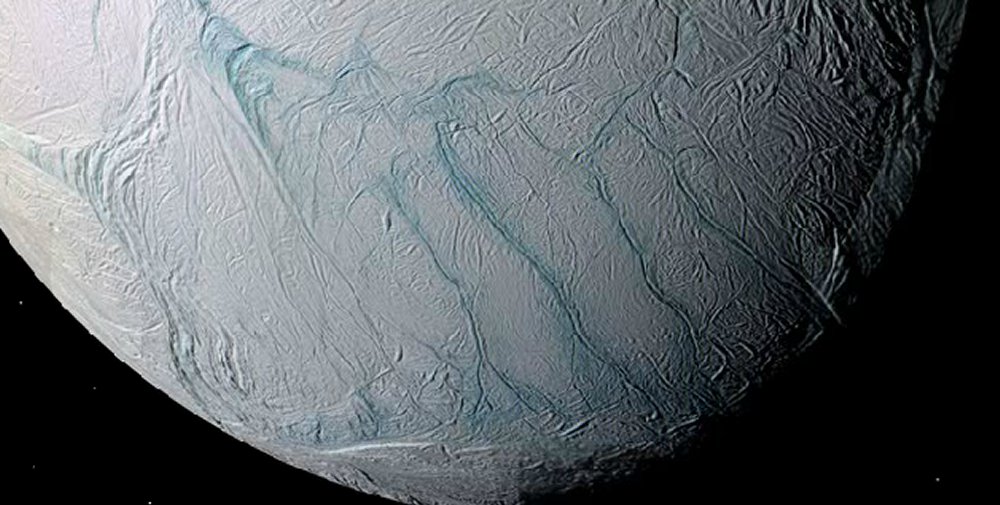Eddie Gonzales Jr. – MessageToEagle.com – Enceladus – Saturn’s icy moon – is an interesting celestial object to astronomers due to its subsurface ocean, and other secrets, like for example its “tiger stripes”, which were first, spotted by the Cassini when the spacecraft photographed geysers spouting from these stripes vent areas on this moon.

Now researchers led by Doug Hemingway, study author at the Carnegie Institution for Science, believe they have solved the mystery of Enceladus’ “tiger stripes” and what causes them.
“First seen by the Cassini mission to Saturn, these stripes are like nothing else known in our Solar System,” lead Hemingway said in a press release.
“They are parallel and evenly spaced, about 130 kilometers long and 35 kilometers apart. What makes them especially interesting is that they are continually erupting with water ice, even as we speak. No other icy planets or moons have anything quite like them.”
Working with Max Rudolph of the University of California, Davis and Michael Manga of UC Berkeley, Hemingway used models to investigate the physical forces acting on Enceladus that allow the tiger stripe fissures to form and remain in place.
The team wanted to know why the stripes are present only on the moon’s south pole but were also keen to figure out why the cracks are so evenly spaced.
The study reveals that the fissures that makeup Enceladus’ tiger stripes could have formed on either pole, the south just happened to split open first.
During periods of gradual cooling on Enceladus, some of the moon’s subsurface ocean will freeze. Because water expands as it freezes, as the icy crust thickens from below, the pressure in the underlying ocean increases until the ice shell eventually splits open, creating a fissure. As their ice is thin, the poles are the most disposed to cracks.
“Our model explains the regular spacing of the cracks. That caused the ice sheet to flex just enough to set off a parallel crack about 35 kilometers away,” Max Rudolph, assistant professor of earth and planetary sciences at the University of California, Davis, and study author said.
That the fissures stay open and erupting is also due to the tidal effects of Saturn’s gravity.
“Since it is thanks to these fissures that we have been able to sample and study Enceladus’ subsurface ocean, which is beloved by astrobiologists, we thought it was important to understand the forces that formed and sustained them,” Hemingway said.
Our modeling of the physical effects experienced by the moon’s icy shell points to a potentially unique sequence of events and processes that could allow for these distinctive stripes to exist.”
The findings are published by Nature Astronomy.
Written by Eddie Gonzales Jr. – MessageToEagle.com Staff






